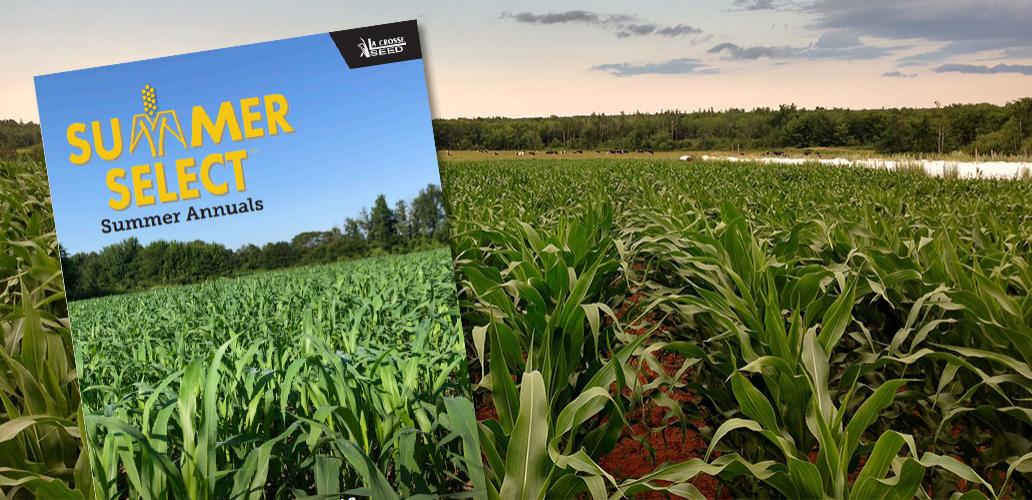Forage First Guide I Summer Select Guide
Greater Value. Good Move. Yield and quality matter. But there’s more. Our goal is to provide a higher standard for forage to maximize ROI– while keeping your wallet in mind. We take pride in delivering proven products that increase the bottom line at a good price.

Winter peas are a rapid, low growing annual legume used across the country as a nitrogen fixing cover crop and/or quickly decomposing green manure crop. The forage value of winter peas, along with their overall management are benefited when planted alongside a cereal grain.
CHARACTERISTICS:
Non-Forage Benefits:
1 = Poor; 5 = Excellent
Compaction Alleviation: 2
Weed Suppression: 4
Biomass Production: 3
Erosion Control: 3
Disease/Pest Control: 3
Pollinator/Beneficials: 4
P & K Cycling: 2
Ease of Establishment: 4
Nitrogen Fixer/Scavenger: Fixer
Nutritional Value:
Values Vary Greatly Depending on Maturity
Crude Protein:
NEL¹ Mcal/lb.: 0.60
ADF%²: 38
NDF%³: 54
TDN: 70
DM Tons/Acre: 0.5-2
Days to First Harvest: Spring
¹- Net Energy for Lactation = Energy available after subtracting digestive and metabolic losses
²- Acid Detergent Fiber = Low values mean more digestible
³- Neutral Detergent Fiber = Low values mean cows can eat more
Ranking (Good, Better, Best):
Graze: Better
Baleage: Good
Chop: Best
SEEDING:
Planting Time:
Aug.-Sept.
Seeding Rate:
Mono (lbs./acre): 30-80
Mix (lbs./acre): 10-30
Forage (lbs./acre): 40-60
Aerial (lbs./acre): NR
Seeding Info:
Carbon/Nitrogen Ratio (C:N): 15:1-20:1
Seeding Depth (in./with drill): 1
Seeds/lb.: 2,000
Bulk Density (lbs./ft.): 52
Aerial Application Rate: NR
Germination Soil Temp.: 41 F
USDA Hardiness Zone: 6
Days to Emergence: 9
MANAGEMENT:
Considerations
- Ideal soil pH 6.0–7.0
- Not the best option to sequester nutrients and/or break up compaction
- Large seed size makes broadcast applications more difficult
- Mowing or forage harvest in spring will terminate crops
- Dwarf growth habit with upright stance
- Improved winter hardiness over Austrian-type winter peas
- Uniquely white-flowered and tannin-free (increasing palatability)
- Strong nitrogen fixer and very high biomass potential
- Quick growth; good for weed suppression
- Plant 6-8 weeks before first frost to maximize growth and nitrogen production (bud stage or after)
- Hardy to USDA Zone 6 (-5 to -10°F)
- Spring peas planted in fall (as in SF 125) need 60-90 days to maximize growth

.png)
.png)


.png)











